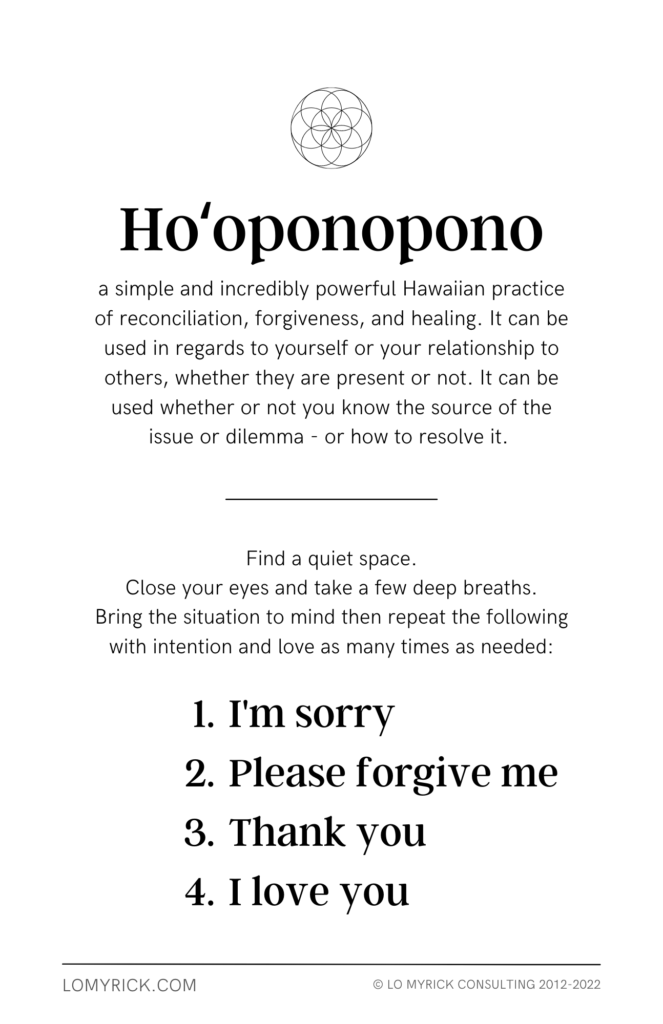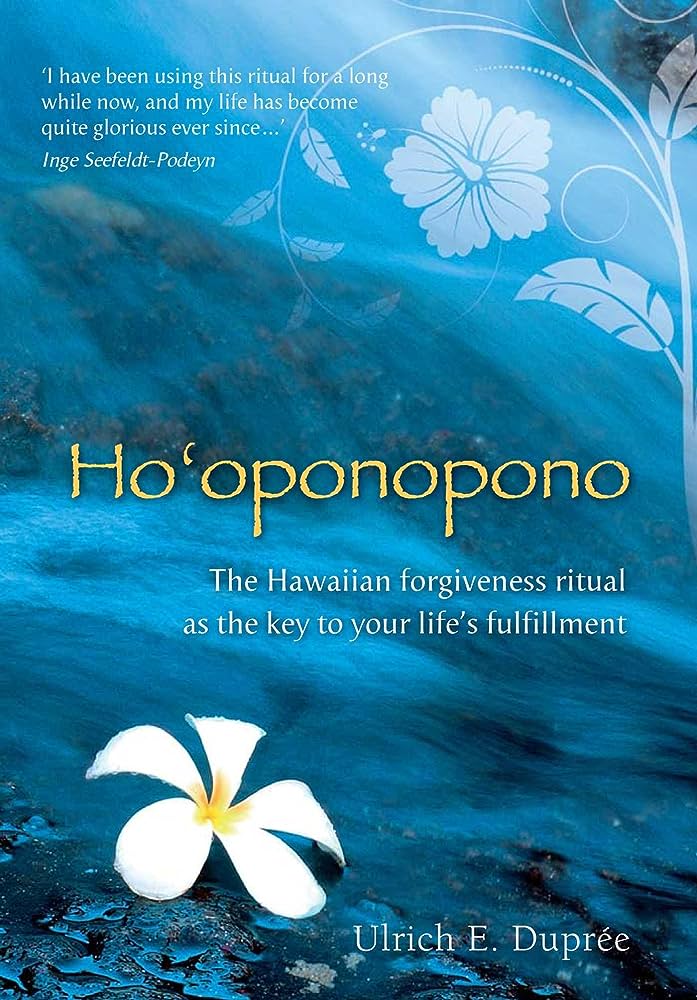In this article, we will explore whether it is possible to practice Ho’oponopono without the help of a guide. We will discuss the origins of Ho’oponopono, its principles and techniques, and examine whether it is feasible to embark on this spiritual practice alone. By the end of this article, you will have a better understanding of Ho’oponopono and whether it is suitable for self-practice or requires guidance.

Overview of Ho’oponopono
Origins and history of Ho’oponopono
Ho’oponopono is an ancient Hawaiian practice of reconciliation and forgiveness. It has its roots in the traditional Hawaiian culture and has been passed down through generations. The word “Ho’oponopono” can be translated to mean “to make right” or “to rectify an error.” It was traditionally used to resolve conflicts within families or communities and restore harmony.
The principles of Ho’oponopono
Ho’oponopono is based on the belief that we are all interconnected and responsible for each other’s well-being. It recognizes that our thoughts, beliefs, and actions have a profound impact on ourselves and the world around us. The practice emphasizes taking personal responsibility for our experiences and the need for healing and forgiveness.
Ho’oponopono as a spiritual practice
Ho’oponopono is not just a technique; it is a spiritual practice that involves self-reflection, healing, and transformation. It encourages individuals to delve deep into their inner world and confront their fears, traumas, and limiting beliefs. By acknowledging and releasing these negative patterns, it is believed that one can achieve emotional, mental, and spiritual healing.
The Importance of a Guide in Ho’oponopono
The role of a guide in Ho’oponopono
In Ho’oponopono, a guide plays a crucial role in facilitating the healing process. A guide is someone who has extensive knowledge and experience in the practice. They provide guidance, support, and wisdom to individuals who are exploring Ho’oponopono for the first time or seeking to deepen their understanding.
Why having a guide can enhance the practice
Having a guide can greatly enhance the practice of Ho’oponopono for several reasons. First and foremost, a guide can help individuals navigate through their own emotions and experiences. They can offer insights, tools, and techniques to assist in the healing process. A guide can also provide a safe and non-judgmental space for individuals to share their thoughts and feelings.
The benefits of learning from an experienced practitioner
Learning from an experienced practitioner can provide invaluable benefits when practicing Ho’oponopono. Their expertise can help individuals avoid common pitfalls, understand the intricacies of the practice, and learn from real-life examples. Experienced practitioners can also offer personalized guidance and tailor the practice to an individual’s specific needs and goals.
Challenges of Practicing Ho’oponopono Without a Guide
Lack of knowledge and understanding
One of the main challenges of practicing Ho’oponopono without a guide is the lack of knowledge and understanding of the practice. Ho’oponopono is a deep and nuanced practice that requires a certain level of understanding to be effective. Without proper guidance and education, individuals may misunderstand or misapply the techniques, hindering their healing journey.
Difficulty in applying the technique correctly
Ho’oponopono involves various techniques and processes that need to be applied correctly for optimal results. Without a guide, individuals may struggle to grasp the nuances of these techniques and find it challenging to implement them effectively. This can lead to frustration and a lack of progress in the healing process.
Potential emotional and psychological challenges
Ho’oponopono can bring up deep-seated emotions, traumas, and limiting beliefs that may be difficult to navigate without proper guidance. Without a guide, individuals may feel overwhelmed or unable to cope with the intensity of these emotions. A guide can provide the necessary support and tools to help individuals process and heal these emotional wounds.
Self-Guided Ho’oponopono Techniques
Meditation and self-reflection
Meditation and self-reflection are key components of self-guided Ho’oponopono practice. By setting aside dedicated time for quiet reflection, individuals can connect with their inner selves and gain clarity on their thoughts, emotions, and experiences. This self-awareness is essential for recognizing and releasing negative patterns that hinder personal growth and healing.
Using affirmations and mantras
Affirmations and mantras are powerful tools in self-guided Ho’oponopono practice. By affirming positive statements and repeating healing mantras, individuals can reprogram their subconscious mind and shift their mindset towards healing, forgiveness, and self-compassion. These affirmations and mantras serve as a reminder of one’s intention to heal and transform.
Visualization and energy healing practices
Visualization and energy healing practices can also be incorporated into self-guided Ho’oponopono. By visualizing oneself surrounded by healing light or engaging in energy-healing techniques such as Reiki or EFT (Emotional Freedom Technique), individuals can tap into their innate healing abilities and facilitate the release of emotional blockages.

Building a Solid Foundation in Ho’oponopono
Learning the basics of Ho’oponopono
Before embarking on a self-guided Ho’oponopono practice, it is essential to learn the basics of the practice. This includes understanding the principles, techniques, and processes involved in Ho’oponopono. There are ample resources available, such as books, articles, and online courses, that can provide a comprehensive introduction to the practice.
Understanding the process of forgiveness and healing
Forgiveness is at the core of Ho’oponopono practice. Understanding the process of forgiveness and embracing its transformative power is crucial in building a solid foundation in Ho’oponopono. This process involves acknowledging one’s own role in creating negative experiences, expressing remorse, seeking forgiveness, and letting go of resentments and grievances.
Developing self-awareness and mindfulness
Self-awareness and mindfulness are fundamental in Ho’oponopono practice. By cultivating an awareness of one’s thoughts, emotions, and reactions, individuals can identify negative patterns and take steps towards healing and transformation. Mindfulness practices, such as meditation and conscious breathing, can help individuals stay present and connected to their healing journey.
Seeking Support and Resources
Finding reputable books and guides on Ho’oponopono
There are numerous books and guides available on Ho’oponopono that can provide valuable guidance and insights. It is essential to find reputable sources that present accurate information and offer practical techniques. Recommendations from experienced practitioners or trusted recommendations can help individuals find the most suitable resources for their self-guided practice.
Joining online communities or forums
Joining online communities or forums dedicated to Ho’oponopono can offer a sense of belonging and support. These communities provide a platform for individuals to share their experiences, seek advice, and learn from others who are on a similar journey. Engaging in discussions and connecting with like-minded individuals can be empowering and enriching.
Attending workshops and training programs
Attending workshops and training programs led by experienced practitioners can be a transformative experience. These events provide opportunities for individuals to deepen their understanding of Ho’oponopono and learn directly from those who have mastered the practice. Workshops and training programs often include practical exercises, group discussions, and personalized guidance.

Potential Benefits of Self-Guided Ho’oponopono
Empowerment and taking control of one’s healing journey
Engaging in self-guided Ho’oponopono practice can empower individuals to take control of their healing journey. By learning and implementing the techniques on their own, individuals develop a sense of self-reliance and independence. This self-empowerment encourages personal growth and fosters a deeper connection with oneself.
Flexible practice tailored to individual needs
One of the advantages of self-guided Ho’oponopono practice is the flexibility it offers. Individuals can tailor the practice to their specific needs and preferences. This customization allows for a more personalized and meaningful healing experience. Self-guided practice also enables individuals to incorporate other healing modalities or spiritual practices that resonate with them.
Sense of personal growth and transformation
Engaging in self-guided Ho’oponopono practice can lead to profound personal growth and transformation. By taking responsibility for one’s emotions, actions, and healing, individuals develop a deep sense of self-awareness and self-compassion. Through the process of forgiveness and letting go, individuals can experience a profound shift in their perceptions, relationships, and overall well-being.
The Importance of Self-Responsibility in Ho’oponopono
Taking ownership of one’s emotions and actions
Ho’oponopono emphasizes the importance of taking ownership of one’s emotions and actions. It encourages individuals to recognize that their experiences are shaped by their own perceptions and responses. By taking responsibility for their emotions and actions, individuals can reclaim their power and create positive change in their lives.
Practicing self-forgiveness and self-compassion
Self-forgiveness and self-compassion are integral to Ho’oponopono practice. It involves acknowledging and forgiving oneself for past mistakes, harmful actions, and negative patterns. By practicing self-forgiveness and self-compassion, individuals can release the burden of guilt and shame, paving the way for healing and growth.
Shifting from victim mentality to personal empowerment
Ho’oponopono encourages individuals to shift from a victim mentality to personal empowerment. It challenges the belief that one is a passive recipient of circumstances and empowers individuals to take an active role in their own healing and transformation. By acknowledging their power to create positive change, individuals can break free from limiting beliefs and embrace personal empowerment.
Conclusion
The choice to practice Ho’oponopono with or without a guide is a personal one. While a guide can provide valuable support and guidance, self-guided practice can also be beneficial with proper understanding and dedication. By learning the basics, seeking support, and cultivating self-awareness, individuals can embark on a transformative healing journey through self-guided Ho’oponopono. However, it is important to recognize the potential benefits of seeking guidance from an experienced practitioner as they can offer deeper insights and personalized support. Ultimately, the practice of Ho’oponopono is a personal exploration of forgiveness, healing, and self-discovery, and the choice lies in the hands of the individual to choose the path that resonates most with them.

